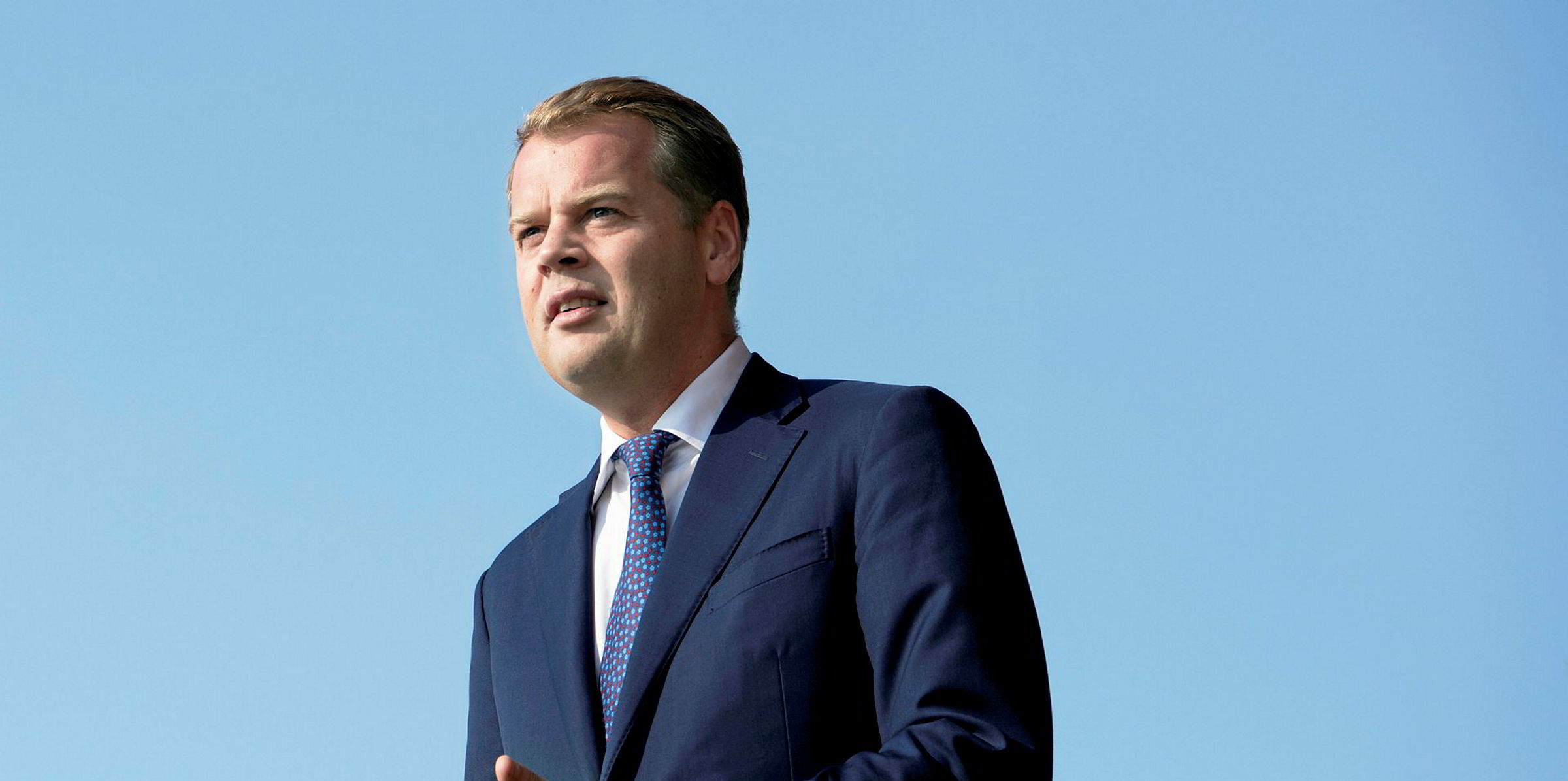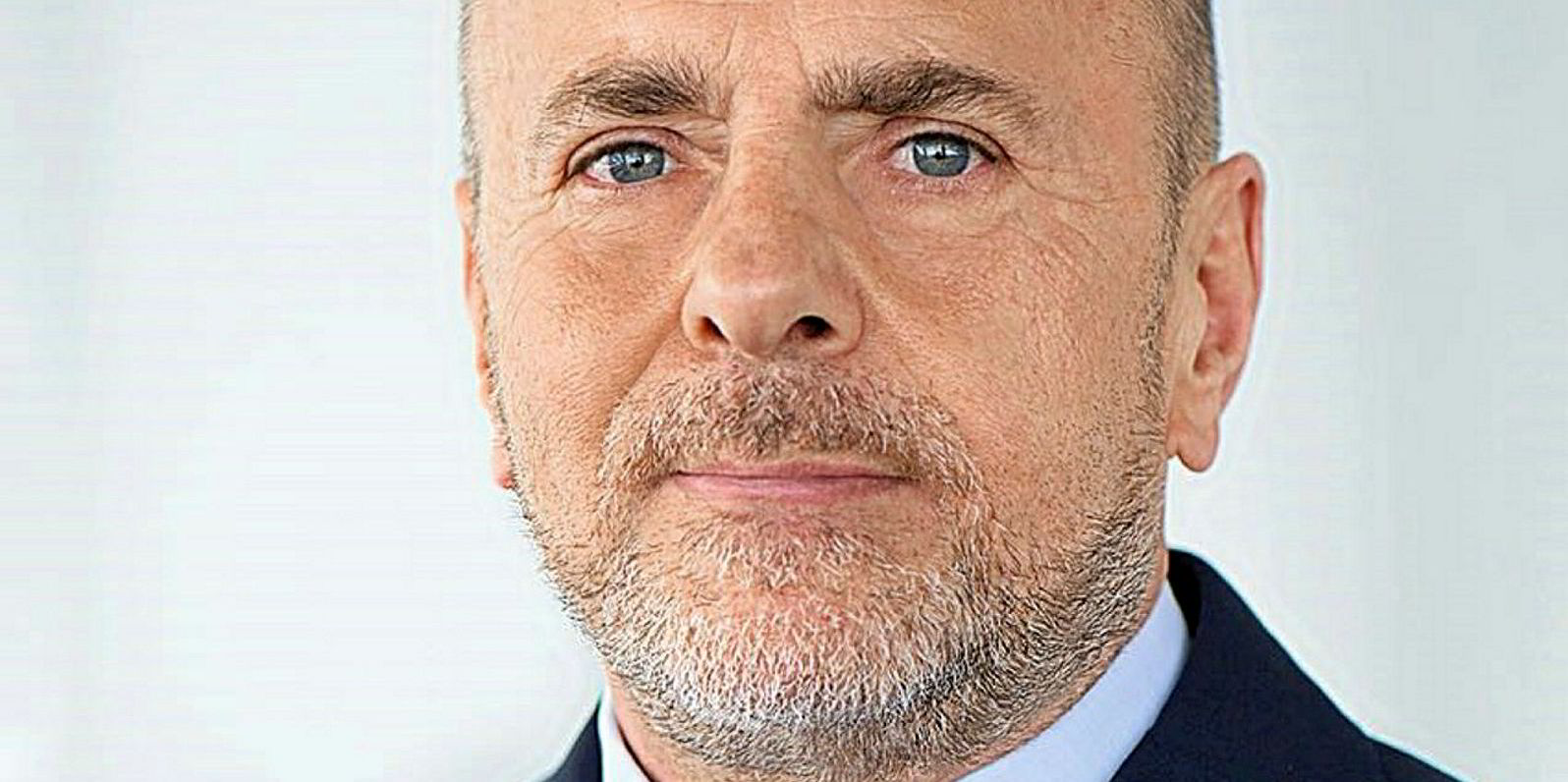Arne Fredly-backed VLCC owner Hunter Group has revealed a tidy profit from selling one of its eight new VLCCs.
The Oslo-listed company said it booked a $12.31m gain from the disposal of DSME hull number 5457.
It paid around $85m to order the vessel and then sold it to SK Shipping of South Korea for $98m in the fourth quarter.
The deal helped boost net profit to $16.11m in the final three months, against $1.25m the year before.
Revenue was $24.43m, up from $52,000 last year when it had no ships. Total operating expenses were $3.41m.
It achieved average daily pool earnings of $66,600. Operating expenses including insurance were $6,240 per day.
Hunter said earnings were strong in the fourth quarter, doubling from the third, primarily driven by improving crude oil demand, tanker supply disruptions and geopolitical tensions in the Middle East.
Forward bookings rise
So far this year, it has booked around 70% of available pool days at an average of $88,300.
It handed over $120m of yard payments in the quarter, leaving $269m of remaining obligations.
The 300,000-dwt Hunter Saga was delivered from DSME more than 40 days ahead of the original delivery schedule, while sistership Hunter Laga came 80 days early.
Ownership was transferred to John Fredriksen's SFL Corp as part of a sale and leaseback deal. This gave Hunter back its $120m.
All three of Hunter's operational ships entered the Tankers International Scrubber Pool.
Fearnley Securities said Ebitda of $8m and adjusted earnings per share were both shy of its estimate and the analyst consensus.
This was despite strong VLCC rates as Fearnley had assumed too many operating days.
"More importantly, the company has covered 70% of first quarter days at $88,300 per day, a very strong number considering pool economics," it added.
"Assuming current rates on uncommitted days we would expect Hunter to deliver a fleet TCE in excess of $70,000 per day."
Virus threat to recede soon
Hunter said it expects the coronavirus situation to come under control in the near future, and global economic conditions to return to normal.
Both newbuilding deliveries and scrubber retrofits are facing substantial delays due to reduced Chinese yard activity and congestion, which should add to a healthy market balance once calm is restored, it added.
VLCC earnings have been hit hard this year, most recently by the Covid-19 outbreak.
"As a consequence of the collapse, the VLCC market is currently finding itself in the unsustainable situation where older non-scrubber vessels reportedly are earning close to zero, compared to $30,000 to $40,000 per day for modern scrubber-equipped vessels," it said.
"With close to 200 vessels (out of 800) being 15 years or more and scrap prices at healthy levels, it is only matter of time before rates improve, either naturally following demand improvements or by scrapping of older loss-making vessels."
Longer term, it expects the strong underlying fundamentals to continue due to the combination of healthy oil demand, increasing distances between crude oil supply and demand, a historical high share of older scrap candidates and owners’ lack of willingness to invest in replacement tonnage.
"The latter is due to high uncertainty around future decarbonisation requirements and hence 'tomorrow’s' propulsion technology," it added.
In addition to the risk of being stuck with a modern asset with the wrong technology, the newbuilding cost premium is high - around $15m for an LNG-fuelled VLCC.
The company said this month it had secured a three-year loan of $220m from Danske Bank, DNB, Nordea and SEB.
The cash will fund its final four new VLCCs. The facility will carry a 275bps margin over Libor.






